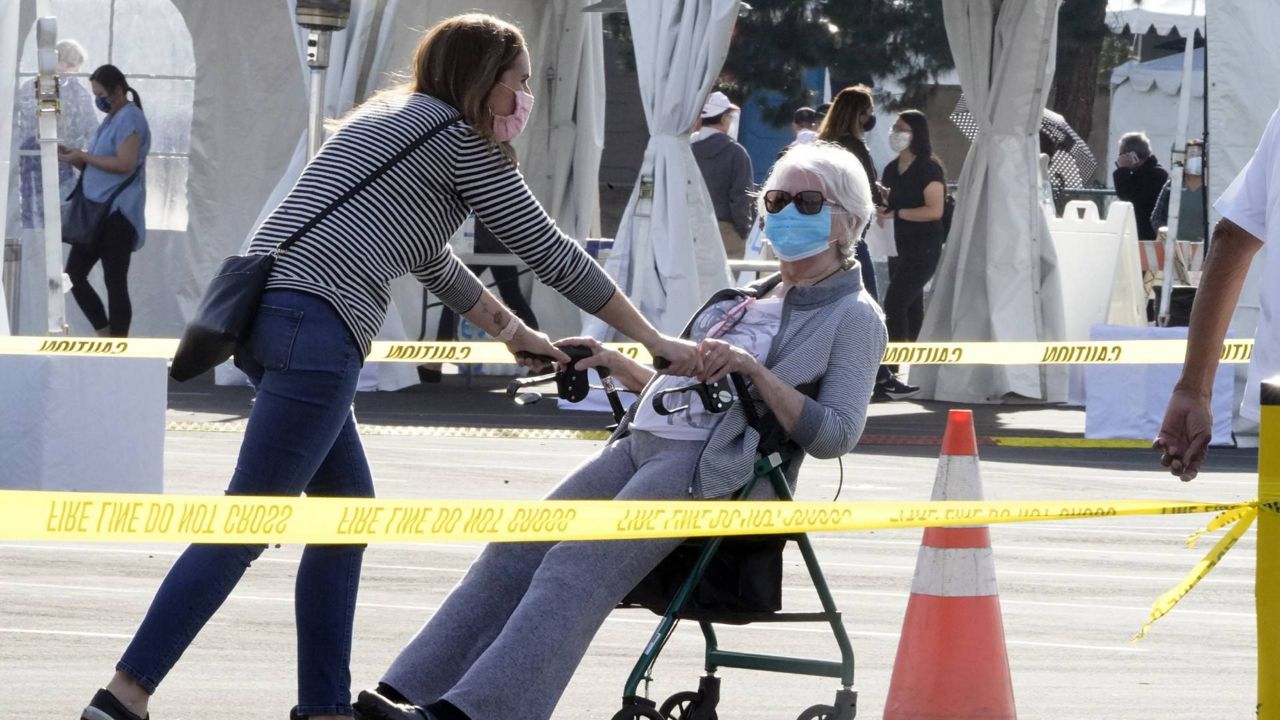SANTA ANA, Calif. (CNS) — Orange County's COVID-19 case and positivity rates continued a downward trend Monday, but hospitalizations appear to have stabilized over the past several days.
The county on Monday reported 169 coronavirus cases, upping the cumulative to 248,881, and logged 21 more fatalities, raising the death toll to 4,486. Hospitalization rates dropped from 241 on Sunday to 233, with intensive care unit patients dipping from 76 to 72.
What You Need To Know
- Orange County reported 169 COVID-19 cases and 21 deaths on Monday
- Hospitalization rates dropped from 241 on Sunday to 233
- OC on Sunday went from the purple tier to the less restrictive red tier of the state's coronavirus regulatory system
- County officials are concerned about a spring break surge in cases, as some residents relax
Orange County CEO Frank Kim said the county's weekly statistics are looking "pretty good" but he'd like to see hospitalization numbers improve more.
"We've kind of stabilized," Kim said of hospitalizations. "I'd like to see that number come down."
As of Monday, the case rate per 100,000 was 4 with a positivity rate of 2.2% and a positivity rate of 3.5% for the underprivileged communities hardest hit by the pandemic, Kim said. That would put the county's case rate just one-tenth of a point away from the red tier to the less restrictive orange tier.
As of Sunday, the county was in the red tier for case rate and in the orange tier for positivity percentages, Kim said.
"There's nothing surprising in the data," Kim said. "This is fairly consistent [in Southern California]. People are starting to plateau in that red-orange area."
State officials have indicated the county will continue to receive its usual allocation of vaccine doses.
The fatalities logged Monday raised the death toll for January, the deadliest during the pandemic, to 1,412. The death toll for December stands at 905, and there have been 442 deaths reported in February and now 22 deaths logged for March.
California COVID-19, By The Numbers:
— CA Public Health (@CAPublicHealth) March 15, 2021
🔹 Confirmed cases to date: 3,528,795
🔹 Note: Numbers may not represent true day-over-day change as reporting of test results can be delayed
More information at https://t.co/TLLUGwPGY7. pic.twitter.com/mhqbXMamtT
The fatalities stemming from the December and January holiday-fueled surge in cases represent 51.6% of the county's entire death toll for the pandemic.
Orange County on Sunday went from the purple tier to the less restrictive red tier of the state's coronavirus regulatory system, allowing for bigger crowds in retail stores and the reopening of museums, movie theaters, and indoor dining at restaurants at limited capacity.
The county had been preparing to move from the most restrictive purple tier to the red tier by this Wednesday, but the timetable was moved up Sunday when the state met its goal of inoculating two million Californians in underprivileged communities where coronavirus has spread more widely.
The red tier allows for many more businesses and organizations to reopen. For instance, retail stores can allow for half capacity instead of 25%, and museums, zoos and aquariums can reopen for indoor activities at 25% capacity, as can movie theaters, gyms, and restaurants.
Wineries, breweries, and distilleries can reopen for outdoor business only.
On Tuesday, when the state updated its weekly numbers in the tiers network, the county's test positivity rate improved to 3.2% from 3.9% from the prior Tuesday, and the adjusted case rate per 100,000 people on a seven-day average with a seven-day lag improved from 7.6 to 6. The county's Health Equity Quartile rate, which measures positivity in hotspots in disadvantaged communities, improved from 4.9% last week to 4.1%.
The county also reported 2,384 COVID-19 tests, raising the cumulative total to 3,183,693.
County officials are concerned about a spring break surge in cases as some residents relax while inoculations churn out.
"We had a meeting the other day where we were concerned about making sure we weren't going to have a second surge with people maybe feeling a little bit too free from the lifting of restrictions," Kim said.



